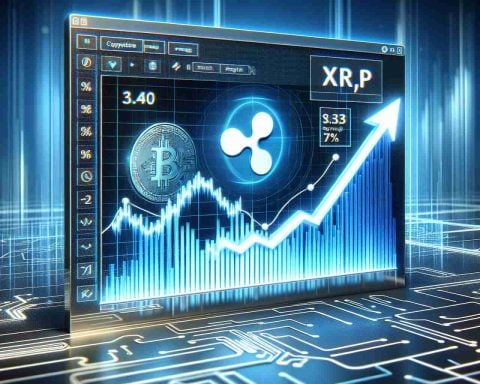In a market full of surprises, the rumors about Ripple venturing into the stablecoin arena have left the crypto community buzzing. Known primarily for its XRP token and its quest to revolutionize cross-border payments, Ripple is seemingly expanding its horizons by exploring stablecoin development, which could mark a pivotal shift in its strategy and the broader crypto landscape.
Why Stablecoins? In the rapidly evolving crypto ecosystem, stablecoins have emerged as a beacon of stability. Pegged to fiat currencies like the US dollar or commodities such as gold, they offer a haven from the notorious volatility associated with cryptocurrencies. For Ripple, a stablecoin could complement its mission by offering a product that alleviates currency fluctuation, thereby enhancing its appeal to institutions wary of crypto’s speculative nature.
Ripple’s Competitive Edge While many companies have delved into stablecoins, Ripple’s unique advantage lies in its existing global payment infrastructure. Leveraging its established partnerships with banks and financial institutions worldwide, Ripple could potentially integrate a stablecoin into a seamless global payment system, thus fostering mass adoption.
The Future of Finance If Ripple indeed launches a stablecoin, it could set new standards in decentralized finance (DeFi), boost liquidity, and increase user adoption of blockchain-based payments systems. It remains to be seen how Ripple’s potential move into stablecoins might reshape the crypto industry, but one thing is certain: it represents an exciting new chapter in the quest for financial innovation.
Get Ready for 2025: Predictive Insights into Cryptocurrency Trends and Risks
As the cryptocurrency market evolves, new developments continue to reshape financial landscapes, and investors are advised to stay informed about emerging trends and risks. One topic stirring discussions is the possibility of Ripple launching its own stablecoin. While the full implications of such a move are yet to be realized, it provides an insightful window into broader cryptocurrency rate predictions, investment risks, and industry controversies anticipated as we move toward 2025.
Cryptocurrency Rate Predictions for 2025
Several financial analysts and crypto experts are speculating about the cryptocurrency landscape by 2025, with a focus on the potential impact of stablecoins. Given their relative stability compared to traditional cryptocurrencies, stablecoins could play a pivotal role in mainstream adoption. The integration of stablecoins, like a potential one from Ripple, may influence the overall rate and market dynamics by supporting more stable ecosystems.
Predictions indicate that by 2025, stablecoins might provide foundational support for the valuation of other digital assets, as they offer more reliable pricing mechanisms. This can, in turn, influence the rates of cryptocurrencies such as Bitcoin and Ethereum, making them more attractive to institutional investors who value price stability.
Investment Risks
While the prospect of stablecoins like those potentially introduced by Ripple appears promising, it’s essential for investors to consider several risks:
1. Regulatory Changes: Future regulatory frameworks could either hinder or enhance stablecoin adoption. Investors should remain vigilant about changes in regulations that could affect the strategic deployment of stablecoin projects.
2. Market Volatility: Even though stablecoins are designed to mitigate volatility, external factors can still influence market conditions, impacting value and reliance.
3. Security Concerns: The technological infrastructure supporting stablecoins must continuously evolve to ward off security threats, ensuring users’ data and finances are protected.
Pros and Cons
Pros:
– Stability: Stablecoins provide a buffer against the erratic price swings seen in traditional cryptocurrencies.
– Fostering Adoption: By reducing volatility, stablecoins can encourage more businesses to use blockchain for payments.
Cons:
– Centralization Risks: Some stablecoins are pinned to a central authority or asset, which might contradict the decentralized ethos of blockchain technology.
– Limited Returns: Due to their stable nature, the potential for significant valuation increases, which attracts many investors to cryptocurrencies, is inherently limited with stablecoins.
Controversies to Consider
The introduction of stablecoins, especially from significant industry players like Ripple, isn’t without controversy. They bring to the forefront debates on decentralization versus centralization, regulatory oversight, and the potential disruption of existing financial systems.
One primary concern is whether stablecoins might eventually lead to a monopolistic environment in the crypto sphere, reducing the diversity and decentralization that originally defined cryptocurrencies.
Keeping Informed
In this ever-changing world of finance and cryptocurrency, staying updated with reliable information sources is crucial. For more information on developments in the crypto space, visit Cointelegraph or CoinDesk, which regularly cover significant industry news, regulatory shifts, and investment insights.
The path to 2025 may be wrought with uncertainties, but understanding potential changes and preparing for different scenarios can empower investors and crypto enthusiasts to navigate this exciting frontier with confidence and caution.

















